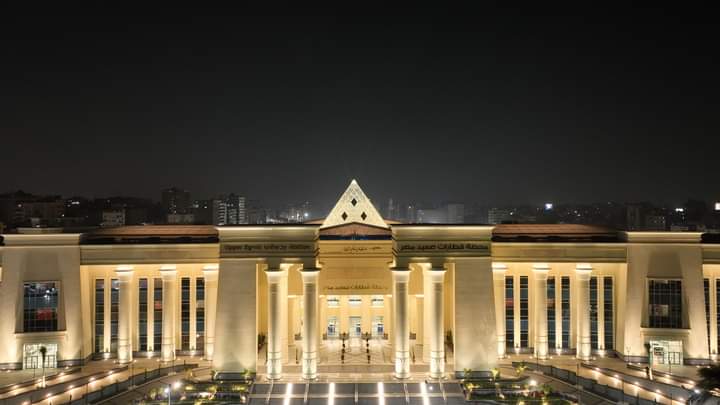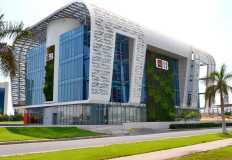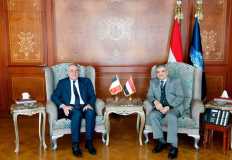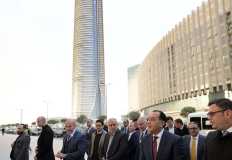
President Abdel Fattah El-Sisi inaugurated on Saturday the Upper Egypt Railway Station in the Bashtil area of Giza, along with a number of other transportation projects in the fields of railways, metro, roads, and Nile axis bridges over level crossings and overhead bridges.
The total number of projects inaugurated today reached 20, of which 8 were inaugurated via video conference. These projects include:
-The Upper Egypt Railway Station
in Bashtil.
-Rehabilitation and modernization
of the Ferdan/Bir Al Abd railway line (via video conference)
-Construction of the Kafr
Dawoud/Sadat railway line (via video conference)
-Upgrade of signaling systems on
the Beni Suef - Assiut railway line (via video conference)
-The third phase of the third
metro line (via video conference)
-Construction of an alternative
Aswan reservoir axis on the Nile (via video conference)
-Construction of the
Zagazig-Senbellawein axis (via video conference)
-Development and duplication of
the 6th of October/Wahat road
-Development and duplication of
the Assiut/Qena/Luxor eastern desert road
-Development and duplication of
the Dahab-Nuweiba road
-Development and duplication of
the Ferdan-Salehiya Road
-Six bridges over level crossings
(Al-Serafi level crossing bridge in Beheira Governorate, Qweisna level crossing
bridge in Menoufia Governorate, Al-Rayah level crossing bridge in Qena
Governorate, Al-Madiq level crossing bridge in Aswan Governorate, Al-Sail level
crossing bridge in Aswan Governorate, and Abu Hummus level crossing bridge in
Beheira Governorate, which was inaugurated via video conference)
-Three overhead bridges on the
Cairo-Alexandria Agricultural Road within Beheira Governorate.
-Kafr El-Dawwar Bridge, King Osman Bridge, and Genbouay Bridge (inaugurated via video conference).
At the inauguration of the Upper Egypt Railway Station, Engineer Kamel El-Wazir, Deputy Prime Minister for Industrial Development and Minister of Industry and Transport, outlined the history of the construction and development of the Egyptian railway network. He noted that the construction of the network began in 1851 during the reign of Khedive Abbas I, and the first line (Cairo/Alexandria) was opened with a length of 208 km in 1854 when Egypt's population was around four million. The network was gradually expanded until its length reached 10,000 kilometers.
Development and maintenance work
on the network lines continued for 160 years (from 1854 to 2014), but it failed
to keep pace with global safety and security standards or the significant
population growth during that period.
Therefore, it was necessary to
implement a comprehensive development plan for all aspects of the current
network. This plan included five key areas: moving units, infrastructure,
signaling and control systems, workshop development, and human resources. The
goal was to maximize the capacity of passenger and freight transport by rail in
Egypt. Passenger transport increased from 700,000 passengers per day in 2014 to
1 million in 2024, with a target of 2 million passengers per day by 2030.
Similarly, freight transport increased from 4.5 million tons per year in 2014
to 8 million in 2024, with a target of 13 million tons per year by 2030.
He added that one of the goals of this development is to reduce carbon emissions. Compared to the use of other modes of transport, such as 50 trucks traveling 100 km, which emits approximately 20 tons of carbon dioxide equivalent, the use of rail transport is significantly more environmentally friendly. A single diesel locomotive carrying 50 containers emits only about 4 tons of carbon dioxide equivalent.





